I've inherited this Linsley-Hoody 75 amplifier.
All of the glass fuses were blown, and most of the power connectors coming off the transformer have come off.
No idea where to reconnect them, the only LH 75 documentation I found on the web doesn't seem to match up at all with this kit.
are these good to listen to these days?
any thoughts appreciated, probably it's going back in the loft, on it's way to a skip in 20 years.
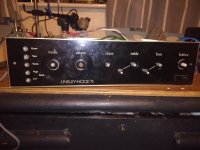
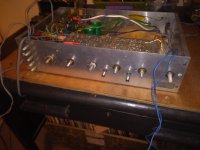
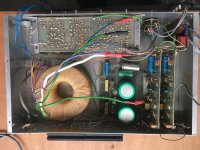
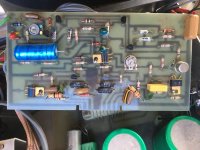
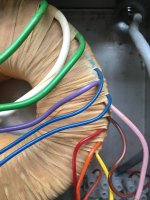 going
going
Is this sort of thing worth restoring?
All of the glass fuses were blown, and most of the power connectors coming off the transformer have come off.
No idea where to reconnect them, the only LH 75 documentation I found on the web doesn't seem to match up at all with this kit.
are these good to listen to these days?
any thoughts appreciated, probably it's going back in the loft, on it's way to a skip in 20 years.




 going
goingIs this sort of thing worth restoring?
There are a few web references around. Some liked the sound, others cited poor design. I wanted to build the 1969 circuit but went down the tube amp direction. This reference is interesting https://www.petervis.com/manuals/linsley-hood-75-watt-amp/linsley-hood-75-watt-amp.html
Hifi engine has a construction manual listed but looks like memberships are closed. If you can’t find elsewhere you could post a request for a member to provide. I recall a thread here on the JLH 1969 so it’s likely someone has it already.
Thank you for the thoughts and data. I also found this :
https://www.angelfire.com/sd/paulkemble/sound3.html
which has a few more related pages.
Back in the cupboard for the time being...
https://www.angelfire.com/sd/paulkemble/sound3.html
which has a few more related pages.
Back in the cupboard for the time being...
I remember when these came out in the late 60s early 70s. To their credit they were one of the very early attempts to do hifi high power audio with silicon.
They were not particularly reliable as they pushed the output devices available at the time and did not implement a full dual slope SOA protection circuit for those stressed output devices like was done in the 1969 RCA power circuits data book, see page 416.
The result was the output devices were prone to be damaged by any weird loudspeaker speaker loads.
Then there is the quasi complementary output stage with it's less than stellar crossover characteristic as matched fast high power NPN and PNP output devices had yet to hit the market. I never really liked this type of output stage and was happy the day fully complementary devices came onto the market.
I repaired a few failed amps at the time and my take on these amps was they were ho hum but in 1969 ho hum was actually pretty good as a lot of the solid state amps of the time were just very nasty sounding.
By today's amp standards I would look on them as lacking in performance.
There is the nostalgia angle so if you are into that go for a restore. Expect you may find output devices have failed and if so lots of the smaller upstream devices will need to be replaced also. Those blue Phillips electrolytic capacitors will need to be replaced.
They were not particularly reliable as they pushed the output devices available at the time and did not implement a full dual slope SOA protection circuit for those stressed output devices like was done in the 1969 RCA power circuits data book, see page 416.
The result was the output devices were prone to be damaged by any weird loudspeaker speaker loads.
Then there is the quasi complementary output stage with it's less than stellar crossover characteristic as matched fast high power NPN and PNP output devices had yet to hit the market. I never really liked this type of output stage and was happy the day fully complementary devices came onto the market.
I repaired a few failed amps at the time and my take on these amps was they were ho hum but in 1969 ho hum was actually pretty good as a lot of the solid state amps of the time were just very nasty sounding.
By today's amp standards I would look on them as lacking in performance.
There is the nostalgia angle so if you are into that go for a restore. Expect you may find output devices have failed and if so lots of the smaller upstream devices will need to be replaced also. Those blue Phillips electrolytic capacitors will need to be replaced.
The amp was built by my uncle, so there is an amount of nostalgia value. He gave it to my father in, I think, the mid 80s. I remember it turned on and off with a great big whomp of the speakers, so feel it's likely that's whats failed and blown all the fuses. However it was an improvement on the Ferguson all-in-one system it replaced, which often gave you an electric shock if you brushed the metal front panel.
I think based on the responses regarding the general performance and issues with this amp, and my lack of knowledge, I'll elect not to attempt to restore it...doubful that I could myself anyway. But the case is very nice so I'll use that for a class d project, which I can certainly do.
Thanks very much for the detailed information.
I think based on the responses regarding the general performance and issues with this amp, and my lack of knowledge, I'll elect not to attempt to restore it...doubful that I could myself anyway. But the case is very nice so I'll use that for a class d project, which I can certainly do.
Thanks very much for the detailed information.
- Home
- Amplifiers
- Solid State
- Linsley-Hood 75 Kit Amp Assessement